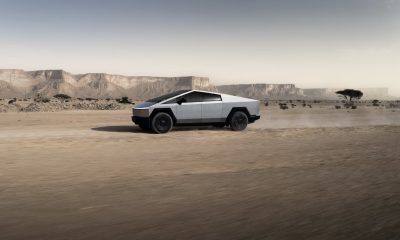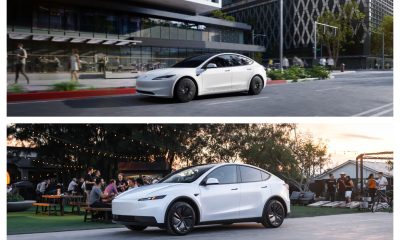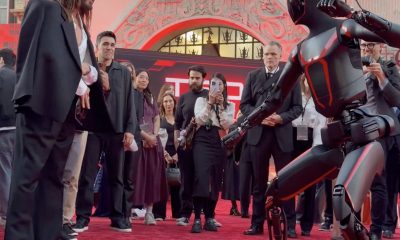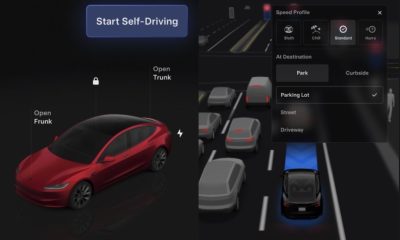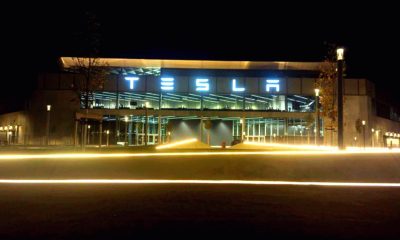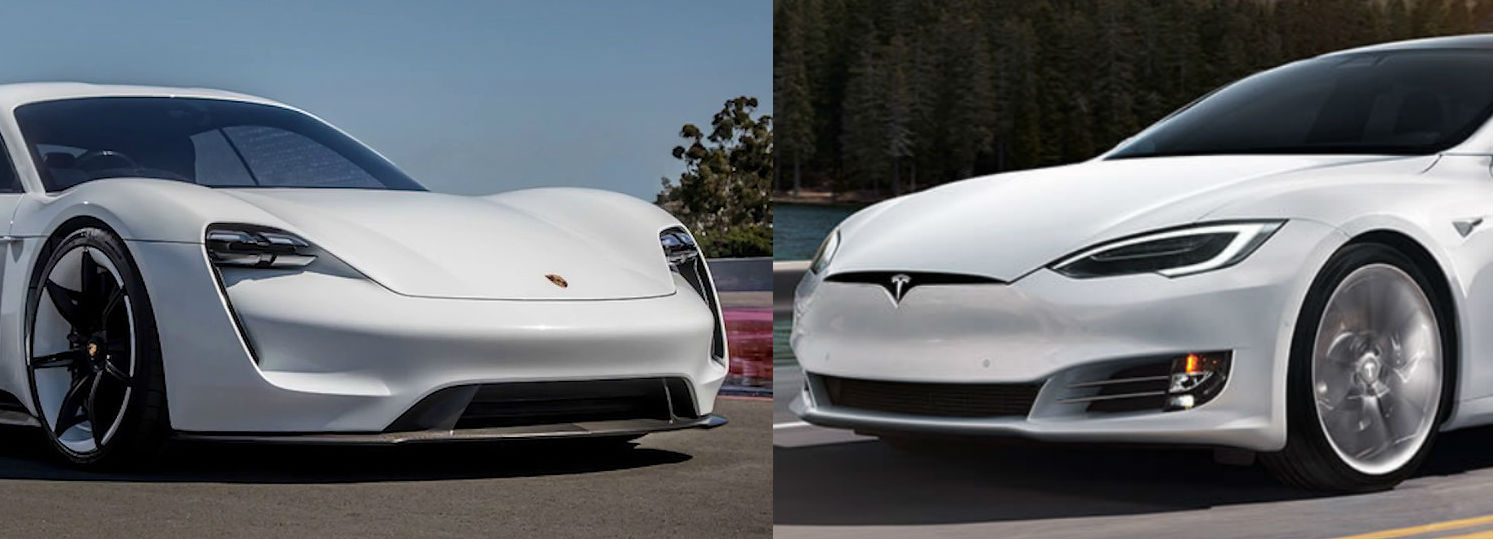
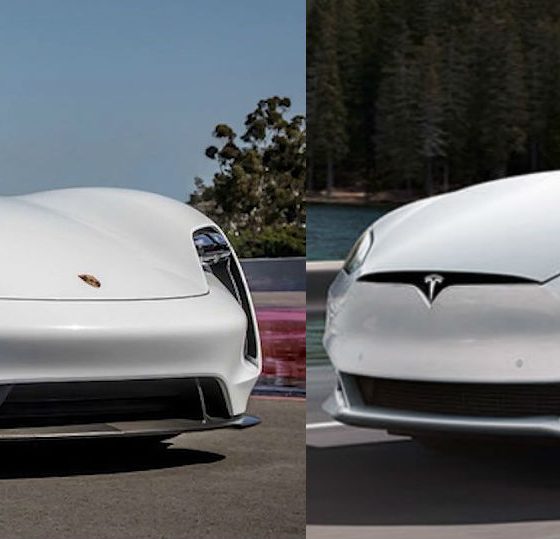
Lifestyle
Tesla Model S finally takes on Porsche Taycan in electric heavyweight battle
The Tesla Model S Performance and Porsche Taycan Turbo S have finally gone head to head. Tesla’s flagship sedan which was first released in 2012 has been waiting for a worthy competitor, and it finally received a rival when Porsche unveiled the Taycan in September 2019.
Automotive publication Car and Driver pegged the two Dual Motor electric sedans up against each other to see what vehicle was superior. After testing everything from performance to comfort, they determined the winner was the Model S.
A neutral party was exactly what the electric vehicle community needed to determine which performance-level car was superior. Car and Driver noted that while the vehicles both had positives and negatives, neither truly disappointed overall. It was clear the reviewers were happy with both the 778 horsepower Model S “Raven” and the 750 horsepower Taycan, but only could be the winner.
The Taycan held the upper-hand during the performance test. The Porsche’s 30-to-50 MPH and 50-to-70 MPH acceleration rates were the fastest they had ever seen in a vehicle. The Taycan also offered 1.3 G-forces of initial acceleration, comparing it to what they thought a time-travel portal would feel like.
Another point was given to the Taycan after charging the vehicles. The Taycan utilized 350-kW Electrify American chargers that were never occupied by another electric car during the duration of the Porsche’s charging session. It also charged at a consistently higher rate than the Tesla Supercharger C&D used for the Model S. “Tesla’s Supercharger network might have more stations, but it also has more users, and Tesla owners have faced long queues just to plug in during peak travel times.”
While C&D did state they feel the Taycan is a better vehicle “from the driver’s seat alone,” it was not enough to justify the drastic price difference between the two vehicles. The Tesla Model S Performance is available for $99,990 on Tesla.com, while the Taycan Turbo S is $188,960 on Porsche’s website.
The Model S offered the reviewers a fast, spacious, and comfortable driving experience. They recognize the vehicle’s catalytic effect on the growth of not just electric vehicles, but the automotive industry in general. The car’s interior, including its huge infotainment screens, which have spread to internal combustion vehicles, was just one of the reasons the Model S was superior.
While the Taycan outperformed the Model S in eight of the thirteen different speed tests that included a one-foot rollout, 0-60 MPH, 0-100 MPH, 0-130MPH, 0-150 MPH, 5-60 MPH rolling start, top gear tests from both 30-50 MPH and 50-70 MPH, a quarter-mile race, top speed, braking from both 70 and 100 MPH, and roadholding tests on a 300-foot diameter skidpad, the reviewers stated they missed other features when they started driving the Porsche. The biggest was Tesla’s “one-pedal driving” feature, “we missed it every time we hopped back into the Taycan,” Dave VanderWerp wrote.
- Porsche Taycan Turbo S
- Rollout, 1 foot: 0.2 seconds
- 0-60 MPH: 2.4 seconds
- 0-100 MPH: 6.0 seconds
- 0-130 MPH: 10.5 seconds
- 0-150 MPH: 15.2 seconds
- 5-60 MPH rolling start: 2.9 seconds
- Top Gear, 30-50 MPH: 1.1 seconds
- Top Gear, 50-70 MPH: 1.6 seconds
- Top Speed (according to Porsche): 162 MPH
- Braking, 70-0 MPH: 155 ft, 100-0 MPH: 306 ft
- Roadholding, 300-ft-dia skidpad: 0.99 g
- Tesla Model S Performance “Raven”
- Rollout, 1 foot: 0.2 seconds
- 0-60 MPH: 2.5 seconds
- 0-100 MPH: 6.4 seconds
- 0-130 MPH: 11.9 seconds
- 0-150 MPH: 18.5 seconds
- 5-60 MPH rolling start: 2.8 seconds
- Top Gear, 30-50 MPH: 1.1 seconds
- Top Gear, 50-70 MPH: 1.6 seconds
- Top Speed (according to Tesla): 163 MPH
- Braking, 70-0 MPH: 156 ft, 100-0 MPH: 313 ft
- Roadholding, 300-ft-dia-skidpad: 0.92 g
One surprising portion of the comparison was range. The Model S boasts an EPA estimated 348 miles per charge, while the Taycan only offers 192 miles. However, a test where both vehicles traveled at 75 MPH for a total distance of 100 miles proved that the Model S only held a slight advantage with only 10 more miles of range after completion.
While both cars were impressive and offered something special, the nearly $190,000 price tag of the Taycan Turbo S was simply too high for what it offered. The Model S was a better car all-around as its virtues were simply undeniable and proven after eight years of continuous top-notch performance. “There’s no question which is the better buy,” they said, and it is the Model S.
The full comparison of both vehicles from Car and Driver is available here.
Lifestyle
Tesla Model S Plaid battles China’s 1500 hp monster Nurburgring monster, with surprising results
There is just something about Tesla’s tuning and refinement that makes raw specs seem not as game-changing.

The Tesla Model S Plaid has been around for some time. Today, it is no longer the world’s quickest four-door electric sedan, nor is it the most powerful. As per a recent video from motoring YouTube channel Carwow, however, it seems like the Model S Plaid is still more than a match for some of its newer and more powerful rivals.
The monster from China
The Xiaomi SU7 Ultra is nothing short of a monster. Just like the Model S Plaid, it features three motors. It also has 1,548 hp and 1,770 Nm of torque. It’s All Wheel Drive and weighs a hefty 2,360 kg. The vehicle, which costs just about the equivalent of £55,000, has been recorded setting an insane 7:04.957 at the Nurburgring, surpassing the previous record held by the Porsche Taycan Turbo GT.
For all intents and purposes, the Model S Plaid looked outgunned in Carwow’s test. The Model S Plaid is no slouch with its three motors that produce 1,020 hp and 1,420 Nm of torque. It’s also a bit lighter at 2,190 kg despite its larger size. However, as the Carwow host pointed out, the Model S Plaid holds a 7:25.231 record in the Nurburgring. Compared to the Xiaomi SU7 Ultra’s record, the Model S Plaid’s lap time is notably slower.
Real-world tests
As could be seen in Carwow’s drag races, however, Tesla’s tech wizardry with the Model S Plaid is still hard to beat. The two vehicles competed in nine races, and the older Model S Plaid actually beat its newer, more powerful counterpart from China several times. At one point in the race, the Xiaomi SU7 Ultra hit its power limit due to its battery’s temperature, but the Model S Plaid was still going strong.
The Model S Plaid was first teased five years ago, in September 2020 during Tesla’s Battery Day. Since then, cars like the Lucid Air Sapphire and the Xiaomi SU7 Ultra have been released, surpassing its specs. But just like the Model Y ended up being the better all-rounder compared to the BYD Sealion 7 and the MG IM6, there is just something about Tesla’s tuning and refinement that makes raw specs seem not as game-changing.
Check out Carwow’s Model S Plaid vs Xiaomi SU7 drag race video below.
Lifestyle
500-mile test proves why Tesla Model Y still humiliates rivals in Europe
On paper, the BYD Sealion 7 and MG IM6 promised standout capabilities against the Model Y.

BYD is seeing a lot of momentum in Europe, so much so that mainstream media has taken every opportunity to argue that the Chinese automaker has beaten Tesla in the region. But while BYD sales this year in Europe are rising and Tesla’s registrations remain challenged, the raw capabilities of vehicles like the Model Y are difficult to deny.
This was highlighted in a 500-mile challenge by What Car? magazine, which showed that the new Tesla Model Y is more efficient, cheaper to run, and more reliable than rivals like the BYD Sealion 7, and even the nearly 400 KW-charging MG IM6.
Range and charging promises
On paper, the BYD Sealion 7 and MG IM6 promised standout capabilities against the Model Y. The Sealion 7 had more estimated range and the IM6 promised significantly faster charging. When faced with real-world conditions, however, it was still the Model Y that proved superior.
During the 500-mile test, the BYD nearly failed to reach a charging stop, arriving with less range than its display projected, as noted in a CarUp report. MG fared better, but its charging speeds never reached its promised nearly-400 kW charging speed. Tesla’s Model Y, by comparison, managed energy calculations precisely and arrived at each stop without issue.
Tesla leads in areas that matter
Charging times from 25% to 80% showed that the MG was the fastest at 17 minutes, while Tesla and BYD were close at 28 and 29 minutes, respectively. Overall efficiency and cost told a different story, however. The Model Y consumed 19.4 kWh per 100 km, compared to 22.2 for MG and 23.9 for BYD. Over the full trip, Tesla’s charging costs totaled just £82 thanks to its supercharger network, far below BYD’s £130 and MG’s £119.
What Car? Magazine’s testers concluded that despite BYD’s rapid sales growth and the MG IM6’s seriously impressive charging speeds, Tesla remains the more compelling real-world choice. The Model Y just offers stability, efficiency, and a proven charging infrastructure through its Supercharging network. And as per the magazine’s hosts, the Model Y is even the cheapest car to own among the three that were tested.
Watch What Car? Magazine’s 500-mile test in the video below.
Lifestyle
Tesla Cybertruck slapped with world’s least intimidating ticket, and it’s pure cringe
One cannot help but cringe and feel second-hand embarrassment at the idea of a person just driving around with a stack of these babies.

A Cybertruck parked at Stanford Shopping Center in California was recently hit with what might be the most try-hard piece of paper ever slipped under a wiper blade: a “fake citation” accusing the driver of supporting a “fascist car.”
The note, shared on X by Tesla staff program manager Ryan Torres, quickly made the rounds on X, where it quickly gained attention as an example of how not to protest.
The world’s least intimidating ticket
According to the citation, the supposed “violation” was “driving a fascist car.” The remedial action? Take the bus, call an Uber, or ride a bike. The note also dubbed Elon Musk a “chainsaw-wielding Nazi billionaire.” Now, protests against Tesla and Elon Musk have become commonplace this year, but one cannot help but cringe and feel second-hand embarrassment at the idea of a person just driving around with a stack of fake anti-Tesla/Musk citations.
Torres pointed out the irony himself in his post on X. Tesla currently employs over 140,000 Americans, and SpaceX has put the U.S. firmly back at the top of space technology. As Torres put it, maybe the person behind the world’s least intimidating ticket should “read a book on innovation before vandalizing” other people’s property.
Peak performative clownery
Not to mention that the fake ticket’s logic collapses under its own weight. EVs like the Cybertruck are literally designed to reduce emissions, not “destroy the economy.” If anything, Tesla has bolstered the United States’ economy by fueling jobs in engineering, manufacturing, and clean energy. It’s not the first time a Tesla has been the target of vandalism or politically charged notes, but this one stands out for sheer cringe value.
Torres summed it up neatly: “Peak clownery.” On that point, at least, the citation earns full marks. In a way, though, perhaps cringe fake tickets are not as bad as the literal firebombs that were being thrown at Tesla stores and cars earlier this year because some critics were gleefully misinformed about Elon Musk.
-
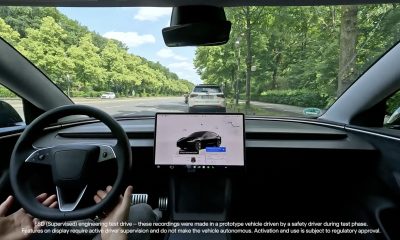
 Elon Musk2 weeks ago
Elon Musk2 weeks agoTesla FSD V14 set for early wide release next week: Elon Musk
-
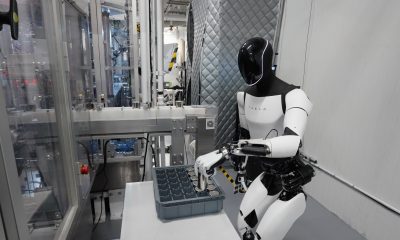
 News2 weeks ago
News2 weeks agoElon Musk gives update on Tesla Optimus progress
-
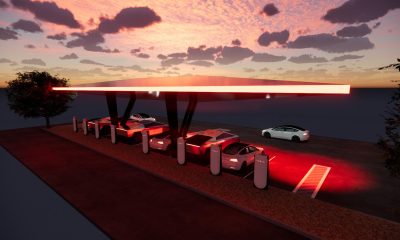
 News2 weeks ago
News2 weeks agoTesla has a new first with its Supercharger network
-
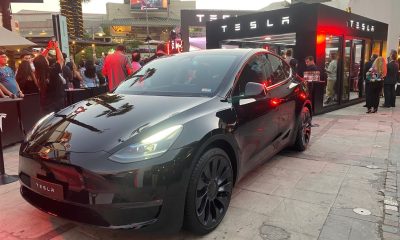
 News2 weeks ago
News2 weeks agoTesla job postings seem to show next surprise market entry
-
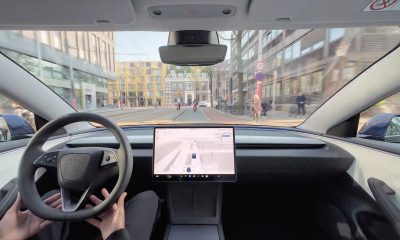
 Investor's Corner2 weeks ago
Investor's Corner2 weeks agoTesla gets new Street-high price target with high hopes for autonomy domination
-
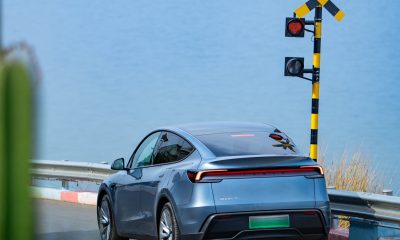
 Lifestyle1 week ago
Lifestyle1 week ago500-mile test proves why Tesla Model Y still humiliates rivals in Europe
-
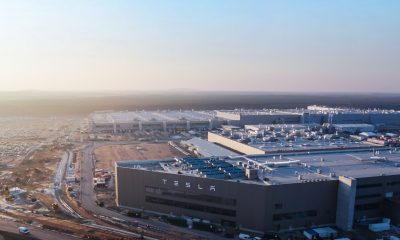
 News1 week ago
News1 week agoTesla Giga Berlin’s water consumption has achieved the unthinkable
-
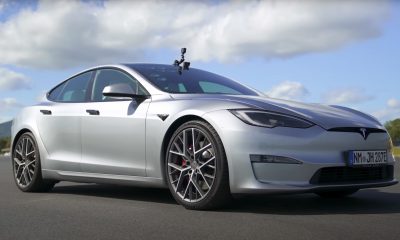
 Lifestyle1 week ago
Lifestyle1 week agoTesla Model S Plaid battles China’s 1500 hp monster Nurburgring monster, with surprising results


